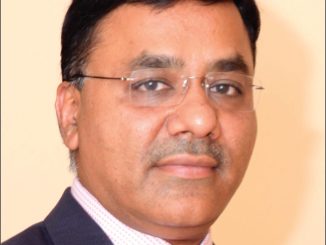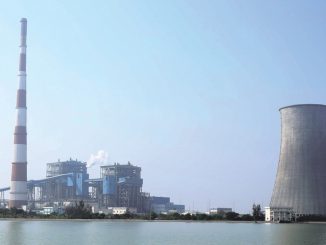
The state of Jammu & Kashmir is striving to meet the growing power demand, and address legacy issues such as high peak deficit and lack of electricity access to unconnected households. A number of projects are being implemented in the state across the generation, transmission and renewable energy segments to improve the state’s power scenario.
Power Line takes a look at some of the key upcoming projects in the state…
Hydro projects
Given its vast hydropower potential, significant hydropower projects are being set up in the state by major players such as NHPC Limited, Jammu & Kashmir State Power Development Corporation (JKSPDC) and GVK Power.
330 MW Kishangana
One of the key projects in the state is the 330 MW Kishanganga project, which is being developed by NHPC in Bandipora district. While construction on the project began in 2009, it has been delayed due to complaints from Pakistan and the security situation in the region leading to protracted international arbitration. However, the Prime Minister’s Office is now overseeing the completion of the project. The project holds national significance as it is in line with the government’s decision to step up the exploitation of India’s share of water under the Indus Water Treaty. It is a run-of-the-river project, which uses water from the Kishanganga river, a tributary of the Jhelum.
The project has three units of 110 MW each, a 37 metre high concrete-faced rockfill dam and an underground powerhouse. It has been designed to divert water from the Kishanganga through a 24 km long tunnel to generate electricity, and then return the water to the river. In a 90 per cent dependable year, it generates 1,350 MUs of energy. The current project cost is around Rs 57.8 billion. The project was scheduled to be commissioned in 2015-16, but is now expected to be commissioned by 2017-18. Upon completion, it will benefit not only Jammu & Kashmir, but also Himachal Pradesh, Punjab, Haryana, Uttar Pradesh, Uttaranchal, Rajasthan, Chandigarh and Delhi.
850 MW Ratle HEP
One of the biggest private power projects in the state is the 850 MW Ratle hydroelectric project (HEP) being developed and operated by infrastructure conglomerate GVK. A run-of-the-river project, it is located downstream of the Dulhasti project and upstream of the Baglihar project near Drabshala village in Kishtwar district. Ratle is the first hydropower project in India awarded on tariff-based international competitive bidding.
The current project cost is around Rs 62.57 billion. Construction on the project began in June 2013, and it was expected to be operational by 2018. However, work has been suspended at the project site due to frequent local disturbances. The targeted completion date of the project has now been extended to 2021-22. Once operational, Ratle will be one of the biggest HEPs in Jammu & Kashmir, with its capacity to generate 3,136.77 GWh of energy in a 90 per cent dependable year.
The infrastructure of the Ratle project includes a 133 metre high concrete gravity dam, measured from the deepest foundation level, on the river Chenab; four main intakes and one intake for the auxiliary powerhouse on the right bank. The auxiliary powerhouse also comprises four main pressure shafts and one pressure shaft. Meanwhile, the underground powerhouse consists of four main units of 205 MW each and one additional unit of 30 MW for the auxiliary powerhouse. The project is designed to generate 3,136.77 MUs.
Sawalkote HEP
The 1,856 MW Sawalkote HEP will be developed and operated by JKSPDC. The project is considered crucial for the state as it is expected to generate 8 billion units of electricity annually. Construction on the project, with a total cost of around Rs 183 billion, is expected to begin next year. In a major milestone for the project, in February 2017, an expert panel of the environment ministry recommended its clearance.
The project would be financed through 70 per cent debt and 30 per cent equity. While the Power Finance Corporation (PFC) has sanctioned the fund sources, JKSPDC will also have to approach the Japan International Cooperation Agency, as required by the Ministry of Finance. A run-of-the-river project, it will require about 1,099 hectares of land, of which 600 hectares is forest land. The project was conceived around 15 years ago and was expected to be completed within 7.5 years. However, its completion has been delayed due to legal technicalities in execution. In addition, an 18 km link road to the project site has not yet been built.
Pakal Dul
Another key upcoming project for the state is the 1,000 MW Pakal Dul project on the Marusadar river, a tributary of the Chenab, in Kishtwar district. It is being constructed by Chenab Valley Power Projects Limited, a joint venture of JKSPDC, NHPC and PTC India Limited. It is the first storage-based project coming up in the state. The project entails the construction of a 167 metre high dam and an underground powerhouse with four units of 250 MW each. PFC has sanctioned a loan for the Rs 104.27 billion project. Of the total power generated from the project, 62 per cent will be owned by Jammu & Kashmir. The project’s tender was awarded in 2014 to a consortium of Patel Engineering, Limak of Turkey and Bharat Heavy Electricals Limited. However, in 2016, it was cancelled citing extremely high prices quoted by the bidder.
Transmission
NRSS-29
The Northern Region Strengthening Scheme (NRSS)-29 being developed by Sterlite Power is one of the critical transmission projects in the state. The project will enable more than 1,000 MW of power exchange between Jammu & Kashmir and the Northern Grid, thus increasing the current power transmission capacity by over 70 per cent.
The Kashmir Valley region suffers from blackouts during the harsh winters as the existing transmission corridor in the state passes through the Pir Panjal region, which is prone to landslides, resulting in the snapping of transmission lines and towers. The proposed route will ensure that the corridor is not affected by landslides and there is 100 per cent uptime. Further, the line will pass through 11 districts of Jammu & Kashmir and will benefit over 12.55 million people. Post-completion, the project is expected to provide employment to over 500 unskilled people in the state.
The project includes the commissioning of three 400 kV double circuit transmission lines and one 400/220 kV gas-insulated substation. The line begins at Jalandhar and passes through Samba before terminating at Amargarh, covering a distance of around 900 ckt. km. Post-commissioning, Sterlite Power would operate and maintain the line for a minimum of 35 years. The project will help in the evacuation and steady transmission of hydro plants in Uri, Doda and Kishtwar, as well as upcoming plants.
In June 2016, Sterlite Power commissioned the first element of the project, the Jalandhar-Samba transmission line, 10 months ahead of schedule. Speaking to Power Line on the project, Ved Tiwari, chief operating officer, Sterlite Power, said, “We are confident of delivering this crucial project to the nation ahead of our scheduled time, which is October 2018.” The project also includes the 307 km Samba-Amargarh line, the 1.5 km Uri-Wagoora line and the Amargarh substation.
Sterlite has faced difficulties during the construction of the project due to the mountainous terrain of the region, which offers only a narrow window of work in the year. To surmount the issues presented by the terrain, the company has deployed helicranes for the first time in India (also the first time helicranes are being used for an infrastructure project) to transport materials and erect towers. Further, it has a pilot project in the pipeline to use drones for stringing heavy cables from tower to tower. However, the use of drones is currently not allowed in the country due to government regulations for security reasons.
Conclusion
Despite the harsh climate, difficult terrain and precarious security situation in Jammu & Kashmir, the state’s power sector is trudging along. The planned projects are expected to go a long way in easing the power demand supply gap in the state. Timely commissioning and a mutli-stakeholder approach is needed to address the challenges impacting the hydro projects in the state.



